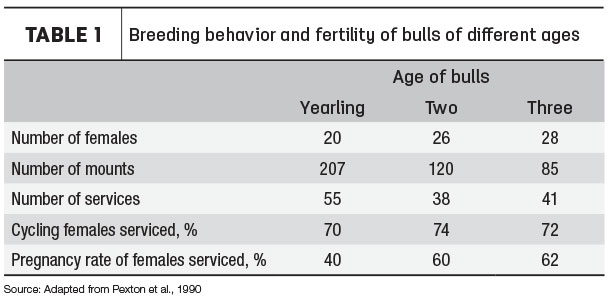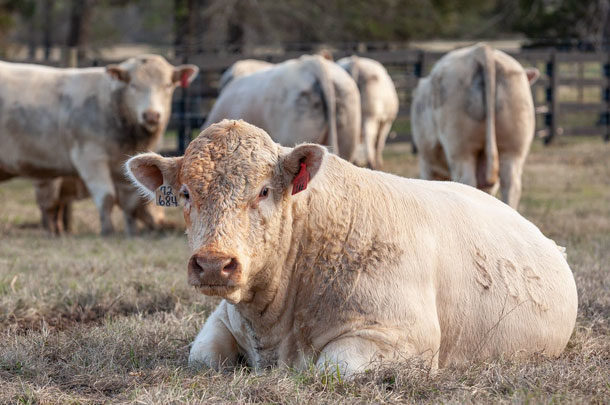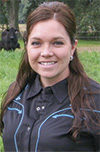This is an exciting time for cattle producers to make genetic investments that hopefully will pay off big down the road. However, purchasing a young herd bull is a tremendous investment, and at the end of the day, customers are counting on that bull to do one job for them: successfully get cows pregnant in an efficient manner. However, there are several factors that can influence his ability to do so. The age of the bull and the body condition he is in can impact his ability to do his job.
Age
A catchy phrase that has come into the bull sale circuit in the past few years is “age advantaged bulls,” referencing bulls that are around 24 months of age for their first breeding season. This is due to the impact that age has on a bull’s breeding behavior. Research and experience have shown us that there is a marked difference in 1-, 2- and 3-year-old bulls’ breeding behavior and fertility. In Table 1, a significant difference between a yearling’s versus a 2- or 3-year-old bull’s ability to cover a group of cows can be seen. However, once those bulls reach 2 years of age, there is little difference between their breeding ability and a 3-year-old bull’s. Thus, purchasing an “age advantaged” bull can pay off for the first breeding season, especially in a scenario where he will be the only sire with that group of females.

Body condition
To give young bulls the opportunity to perform at their maximum genetic potential, developer rations, which supply high energy levels, are delivered to bulls prior to sale day. This development strategy allows for bulls to meet their maintenance requirements while proving needed energy for their growth. However, with these high-energy growth diets comes the opportunity for bulls to become overconditioned.
When evaluating bulls, keep in mind that cattle fatten top to bottom, front to back. So by the time a bull starts to develop pone and cod fat, he is likely fairly overconditioned. Ideally, young bulls should be developed to a body condition score of 6 (on a nine-point scale) to allow for weight loss during their first breeding seasons, which is typically 100 to 200 pounds. Bulls that are overconditioned at a young age will have long-term impacts on their semen quality.
Over the years, overconditioning young bulls has been well researched, and it is an industry standard now that young bulls must be in an acceptable condition prior to sale day. The driving factor behind this is a function of thermoregulation. A bull’s normal body temperature is 101.5°F, whereas his testicular temperature must be maintained between 94°F to 98°F for healthy spermatogenesis. As you increase the temperature of the testicles, semen production and quality decrease. The bull’s ability to thermoregulate his testicles is critical for semen production. Overconditioned bulls have a layer of fat in their scrotum that acts as insulation for the testicles, increasing testicle temperature and decreasing sperm quality. Research has been done where testicles were insulated for 48 hours; this resulted in a decrease in fertility for 23 to 36 days following the insulation period.
While overconditioning bulls is counterproductive from a reproductive and structural standpoint, most seedstock operations do a great job managing the growth of their bulls, making sure they are not overconditioned. However, if bulls are overconditioned, this can cause some long-term reproductive ramifications.
This year as you gear up to make your bull purchases, keep in mind how old that bull will be for his first breeding season in your herd. In addition, arrive early on sale day for more than just the free lunch! Take the time to evaluate the condition of the bulls on your short list. While bulls should be in good condition, excessive body fat can lead to long-term reproductive issues. ![]()

-
Kalyn Waters
- Agricultural Agent
- University of Florida Extension
- Email Kalyn Waters
PHOTO: Southern Cattle Co. bulls in Marianna, Florida. Photo courtesy of Southern Cattle Co.











